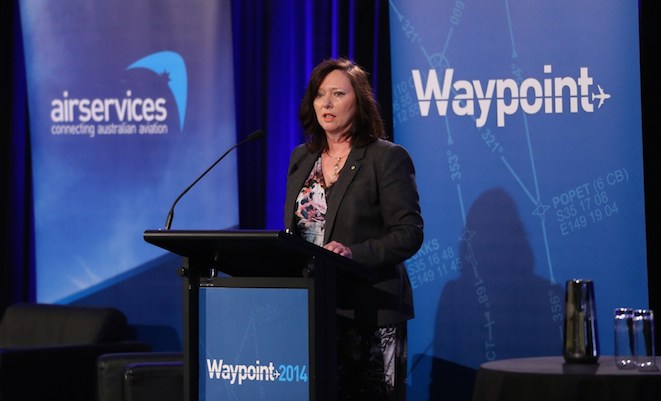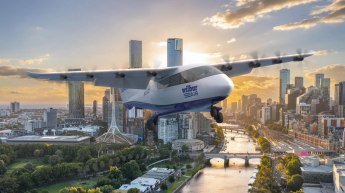
Airservices chief executive Margaret Staib says the move to a common air traffic management system with the ADF is progressing as planned and the project is on track to start construction in 2015.
The OneSKY project, which aimed to unify Australian skies under one air traffic management system, would be introduced in a phased transition from 2018 to 2021, Staib said on Thursday.
“We have completed the tender evaluation and we will soon enter the contract negotiation phase,” Staib told delegates at Airservices’ annual Waypoint conference in Canberra.
“We will source and select the preferred technology in the first quarter of next year. Beyond that, we intend to move into the advanced system design stage and we aim to start building by the end of next year.
“Can I assure you we are on track in its development.”
Staib said the current civilian air traffic management system, The Australian Advanced Air Traffic System (TAAATS), was developed and commissioned in the second half of the 1990s and been extended, upgraded and reprogrammed in the years since.
“We have gone just about as far as we can go – so it’s now time to look to the next 20 years,” she said.
“OneSKY is part of an overall plan to deliver a harmonised national system which will enable a new level of operational and cost efficiency and safety.”
The move to a new unified air traffic management system comes as Australia experiences strong growth in both domestic and international air traffic, while airports such as Melbourne, Brisbane and Perth were at various stages of planning for new parallel runways.
Staib said the OneSKY project had already delivered some benefits given some current systems and infrastructure were being made ready for its introduction.
For example, Airservices’ collaboration with the Department of Defence had resulted in the “optimisation of airspace with civil aircraft provided greater access to military airspace when it is not required operationally”, Staib said.
Staib said Australia had one of the best safety aviation records in the world, with one of the lowest loss of separation occurrence rates attributable to air traffic control.
Purchasing one air traffic management system, rather than one for civilian operations and one for defence operations, would result in combined savings in the “order of several hundred million dollars”, Airservices executive general manager of future service delivery Jason Harfield said.
Lockheed Martin, Thales and Raytheon are understood to be the three bidders for the OneSKY contract.















